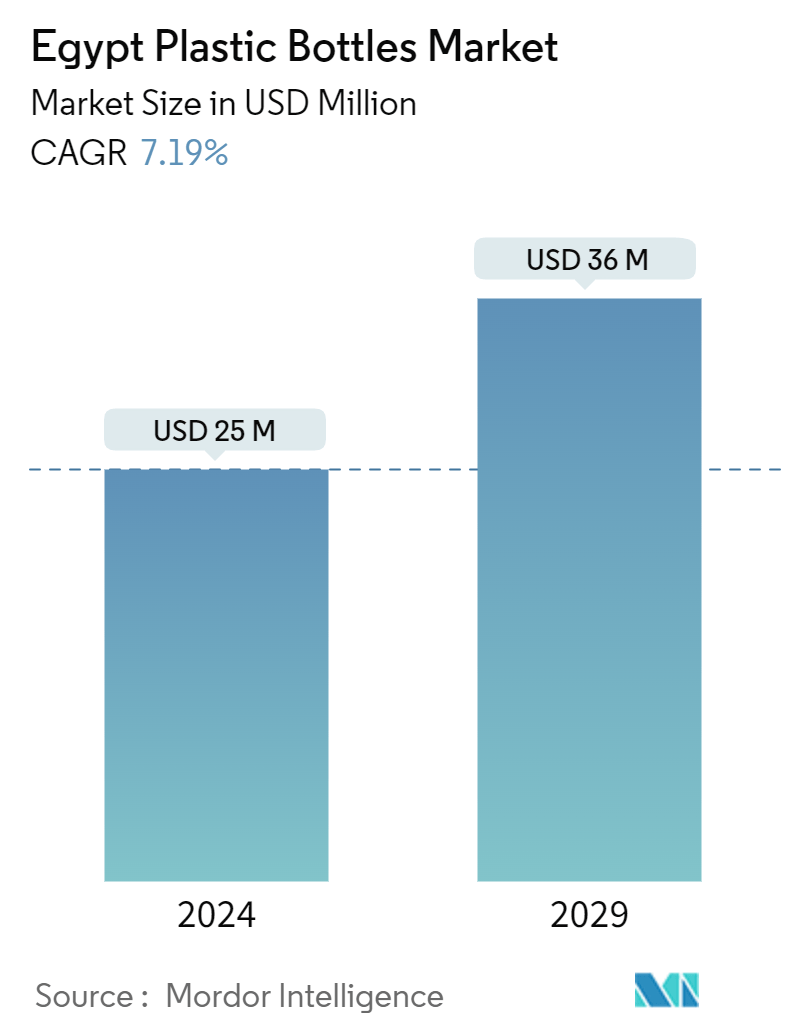Market Size of Egypt Plastic Bottles Industry

| Study Period | 2019 - 2029 |
| Base Year For Estimation | 2023 |
| Market Size (2024) | USD 25 Million |
| Market Size (2029) | USD 36 Million |
| CAGR (2024 - 2029) | 7.19 % |
| Market Concentration | High |
Major Players
*Disclaimer: Major Players sorted in no particular order |
Egypt Plastic Bottles Market Analysis
The Egypt Plastic Bottles Market size is estimated at USD 25 million in 2024, and is expected to reach USD 36 million by 2029, growing at a CAGR of 7.19% during the forecast period (2024-2029). In terms of production volume, the market is expected to grow from 24.87 thousand tonnes in 2024 to 34.16 thousand tonnes by 2029, at a CAGR of 6.55% during the forecast period (2024-2029).
- Egypt, strategically positioned near Africa and the Middle East, stands out as a prominent industrial hub. The plastics industry shines as one of the most dynamic within its vibrant chemicals sector. As reported by the Ministry of Trade and Industry, Egypt's per capita plastics consumption stands at 19.3 kg. This consumption rate, combined with its production capabilities, has positioned Egypt as the leading producer and consumer of plastics in the Middle East, fueling the industry's expansion.
- The rising significance of plastic packaging in Egypt can be linked to its burgeoning population and the consequent surge in food and beverage consumption. Furthermore, with an uptick in tourism, there has been a notable rise in cafes, bars, and kiosks, further bolstering the market.
- In Egypt, manufacturers are pivoting toward HDPE and PET for producing plastic bottles. These bottles cater to a range of industries, including beverages, industrial chemicals, and personal care products. Notably, NatPack, a prominent Egyptian manufacturer, offers an extensive array of bottles in varied volumes and custom products tailored for diverse applications, underscoring the market's growth.
- However, global events such as the Russian-Ukraine conflict and other political unrest have cast a shadow on Egypt's economy. These events have led to the devaluation of the Egyptian pound, soaring inflation rates, and significant trade disruptions. The nation grapples with currency depreciation pressures and foreign currency shortages, which have, in turn, stifled market growth.

